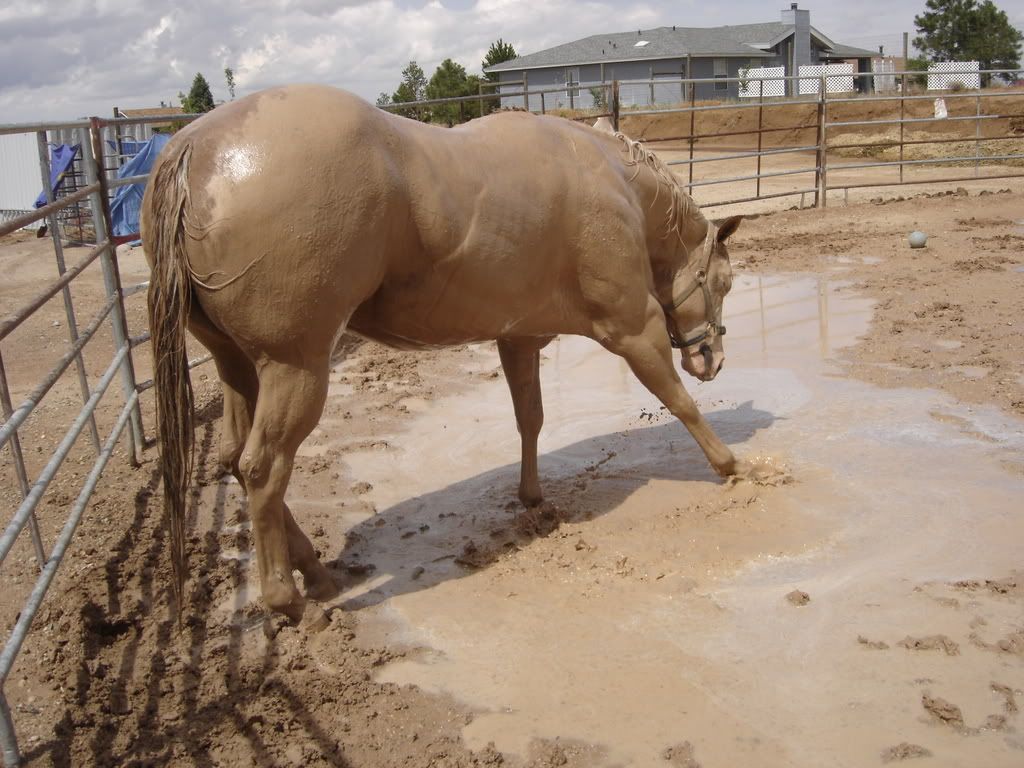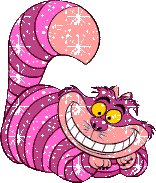"You've covered how you feel about the rider's look, and the tack used on the horse, but I'm curious if any thought is given to the look of the horse in the class.Absolutely the horses turnout condition is taken into account where appropriate. Halter: judged on the conformation of the horse, sometimes includes color and / or pattern of coat but is heavily weighted on conformation. An ill groomed horse will downplay his attributes in the ring. If the coat isn't shiny and giving the appearance of health, that will detract. Consciously or subconciously, it will come into play. Grooming of the horse can actually shape it's appearance, enhance conformation flaws and distract them also. If your horse has a nice even topline with great proportions poll to wither, wither to hip but the mane is long and not drawn up in some manner of presentation, your horse may appear to have a shorter neck. A thick mane in the middle may give the appearance of a cresty neck which can indicate that he's out of shape or not in proportion to the standard of the breed he is representing. Grooming to enhance & downplay your horses' best and worst, is an art form. I will notice long toes even if they are painted with hoof polish and it, more often than not, will hinder your horses' ability to perform pivots in hand and under saddle.
Where I used to show in my youth, you didn't dare show up without trimming your horse's fetlocks, ears, bridle path, and muzzle, or with a dirty horse. Basically, your horse was spotless.
Where I show these days, at least in the open shows, people pull their horses out of the pasture and haul to the show for a day of fun. Some of the horses are muddy and hairy, and it is quite obvious that no effort was made to groom the horses in preparation for the show."
Unless everyone at the show, shows up with no apparent preparation, your horse' turnout will definitely play a part. For one, a horse that is just caught up out of the field with no grooming and such, will most likely show that he/she hasn't been working for the classes under saddle either.
"I would expect a horse in this condition to be marked down in showmanship, but what about other classes? Would you give preference to the groomed horse? What about horses that are too thin?"In horsemanship if the best rider that executes a pattern or works the best on the rail but has the dirtiest horse, they will still win. It is doubtful though, that someone who works and practices their riding prowess, is not going to pay attention to their horse' turnout. But if this turns out to be the case, the best rider takes the blue.
In pleasure if the best horse has engaged his hocks, is moving straight and light under the rider, has the best movement overall with true gaits, he will win without me taking into account that he has muddy hocks. Again, those that work and practice to win in a pleasure class are most likely to show up ready to go as will their horse.
I would hate to think that an exhibitor left a show thinking that the judge pinned a clean horse with poor conformation over a dirty but highly correct horse just because of coat polish, face oil, baby powder and black hooves. Those exhibitor's who gussy up their standardbred / welsh / shire cross that has the movement of a sewing machine with a needle stuck in leather, are trying to play up what few good conformation points that their horse possesses. It doesn't mean they should win if a beautifully built, natural moving quarter horse comes in looking like something just caught by a BLM helicopter round up in the dusty red rock valley unless the class is grooming and conditioning or showmanship. Then again, showmanship has a lot of other criteria i.e. execution of the pattern, presentation in the inspection, etc.
I split ties using the smallest of nit picks. There are always those tiny little flaws no one else may see. A halt that was a bit too short; a bobble on the backing steps; a shoulder dragging transition....something. There is always something, however slight, that will give me my order to place. When I pin a class, I know that if asked, I could give detailed reason as to why I placed how I placed and no, I was not on a 4H judging team.
If I have two horses that I just cannot decide who is first and who is second because they are both good movers, well built, with suitable riders who are showing them to there highest of abilities, what would I do?
I would split a tie using turnout as a mitigating factor only if I could not find any tiny flaw in 2 riders' pattern and rail work. Turnout of the horse does reflect on a rider and therefore I would give very low weight but consider the horses' turnout if everything were equal. I would like to think every judge could give good reasons if asked about their placings with reference only to the rules and expectations of the class (i.e. pleasure, halter, horsemanship, etc).
I wish I spoke for all judges but unfortunately, I have double judged with a judge who did take fancy clothes and silver things into account when placing. Those judges do exist. I suggest you be proactive with your chosen show series or club and try to find a resource list with fair and knowledgable judges.
I just noticed I left out the thin horse question. By thin, I assume that you mean, underweight. Working horses can be fit and may appear a bit thin but their condition is usually well defined by their performance and muscle. Now the underweight horse will never pin over a nicely kept but possibly poorly conformed horse. In this case, the lesser endowed horse would win over the underweight horse. Again, being underweight, can and will define the outline for that horses' conformation so it's most likely not going to come down to a well conformed underweight horse tied with a nicely conditioned but poorly built horse. If in fact, it came to that, the healtheir horse will win even if it's covered with mud and the exhibitor wore a burlap toga.
I hope that covers the question you asked. Please feel free to comment and ask for further clarification if I left something out. I am not a trained writer and therefore sometimes my thoughts do not come out the same on paper or monitor in this case.
Hava great day....the weekend is coming up....are you ready for the show?



Thank you for responding to my question with such detail.
ReplyDeleteI see what you're saying about how grooming, depending on the class, can play a big part in the outcome. Especially halter...
Shows where I live now are a lot more laid back compared to where I used to show. I guess I just figure grooming and conditioning are all part of preparing for a show. But like you said, if the horse isn't groomed and doesn't look prepped, he's probably not going to knock it out of the park when asked to perform either.
And to clarify my "thin horse" comment, I was curious about horses that aren't thin and fit, but rather too skinny and in need of some food. I've seen horses that I don't think should be wearing a saddle, much less have a rider on their back cantering them around the ring. A little hunter/jumper pony comes to mind... he was a great jumper, and placed very well, but he really needed some food.
I have a Paint mare, and she's hard to keep clean. Her knees are always slighty brown, and she always, never fails, always uses the bathroom when we're trotting in the ring, making sure to get manure all over the back of both of her legs. I'm always rushing back to my trailer to wash her legs off between classes, wondering if we could be marked down for that.
Also, my showmanship class is always after my huntseat classes, so I'm standing in the ring with residual saddle marks, sweat marks, and poopy hocks, wondering how much of that influences the judge's placing of us in that class. There's only so much I can do in 10 minutes to go from huntseat to western showmanship.
Thank you again!
I can suggest baby powder for the white on paints, or any other horse for that matter. Some people also use the loose chalk that comes in bags for marking ball fields or keyhole patterns for gymkhana. I think baby powder is more readily available and cheaper especially generic brands. You can use a paper towel to pat it on or make a large powder puff with fleece or faux fur.
ReplyDeleteAs for showmanship classes that follow under saddle classes, that is a tough one. If possible ask your local show to make adjustments on the class list so as to hold all the in hand classes at the start of the day. If that's not possible, do the best you can in those 10 min. Pull the tack, curry up the saddle marks and then smooth it over with a paper towel with powder on it for the white parts. Same for the hocks if they're white. Get the hair lifted and then smooth it out so it will be away from the skin and possibly have some drying before going in showmanship. Good luck to you and safe rides.
Thanks for visiting my blog. What a great subject you have for your blog.
ReplyDeleteWhen I used to show, I would always have my horse bathed, clipped and spotless before. I don't think I ever say any horses that looked like they came straight from the pasture. I didn't realize that some people actually do that.
ReplyDeleteThank you for stopping by my blog and leaving the sweet comment about my goat Ralph! It was a difficult decision, but one that had to be made so he didn't have to suffer anymore.
Paint girl, because of the number of shows that I attend, I see LOTS of horses and riders that look as though they crawled out of bed, threw the horse that they never ride onto the trailer and came to the show. There are small shows where perfect turnout and impeccable grooming are not of the highest priority. But you can always tell the horse that hasn't been schooled and the rider who didn't think a tank top would matter. No offense, but I see this in the southern climates more often. I guess the heat plays somewhat of a part in that but when the sweat streaks start coming down the horses' sides and they're black from lack of grooming, it's too obvious!
ReplyDelete